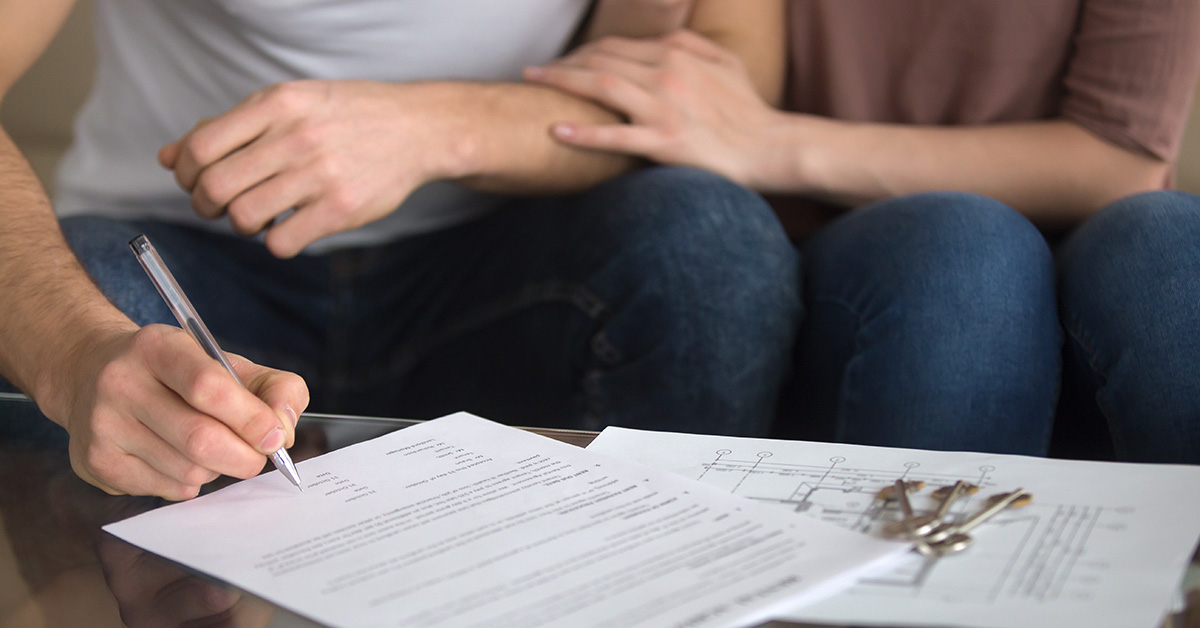Tenancy agreements explained: a guide for landlords & tenants

Entering into a rental agreement requires a clear and mutual understanding between landlords and tenants, particularly in understanding the terms outlined in the tenancy agreement. This legal document defines the rights and responsibilities of both parties and must meet specific legal requirements.
To make the agreement official, it must be signed by both the landlord and the tenant. Given its legal significance, it is important to take the time to read and fully understand the terms before signing.
Whether you are a landlord or tenant - especially if you’re new to tenancy agreements - this guide offers a clear overview of your rights and responsibilities.
What is a tenancy agreement?
A tenancy agreement is a written agreement between a tenant or resident and a property manager/owner. As it is a legally binding contract, it is essential to read and understand its terms carefully before signing.
Types of tenancy agreements
Understanding the different types of tenancy agreements is essential when renting a property in New Zealand. Below are the two main types of tenancy agreements:
Fixed-term tenancy
This type of lease agreement is set for a defined period, clearly outlining both the start and end dates. It can be short-term, such as six months or less, or long-term, typically ranging from one to five years or anywhere within that timeframe.
Periodic tenancy
This type of agreement offers greater flexibility, as it does not have a fixed end date. Instead, it continues until either the tenant or the landlord provides the required written notice to terminate the agreement. In most cases, tenants must give at least 28 days’ notice, while landlords are required to provide 42 or 90 days’ notice, depending on the reason for termination
What should a tenancy agreement include?
All tenancy agreements must include the following:
- The name and address of the tenant, and the property manager/owner or provider
- The dates when the agreement starts and ends (or state that the agreement is periodic)
- Details about how the tenant should pay the rent and how much rent is to be paid
- Details about what the tenant and the property manager/owner or provider can and cannot do, known as 'standard terms'
- Any special terms (these should be agreed in advance, e.g. that dogs are allowed but must be kept outside or carpet cleaning, no smoking etc)
- The period of tenancy agreement
- Fixed term agreement - where a tenant/resident agrees to rent a property for a fixed amount of time (for example, 6, 9 or 12 months)
- Periodic agreement - when a tenant/resident lives there for an indefinite period
Rights and responsibilities of the landlord
- Meeting all the costs of preparing the tenancy agreement
- Ensuring the correct form is used and completed
- Providing a copy of the proposed agreement along with any relevant body corporate rules or bylaws to the tenant before they sign it. Once the tenant signs the agreement, they must return it to the lessor within five days. The lessor then has 14 days to give a copy of the signed agreement to the tenant
- Ensuring that, when an agreement is signed, there are no legal problems that would prevent the tenant from living in the premises for the length of the tenancy
- Ensuring the premises are in a good state of repair, meet the Healthy Homes Standards by compliance date stated on the tenancy agreement and ready for the tenant to move into on the agreed date.
Tenants rights
- The tenant should be given the agreement before paying any money or being committed to the tenancy, and should read it and ask questions if they do not understand anything in it.
- If a tenant does not have a written agreement, they still have protection under the law.
- After thoroughly inspecting the property, if you identify any maintenance issues that need to be rectified, ensure they are documented in the agreement with a clear timeframe for resolution.
- Any additional terms included in the agreement must follow relevant laws and be consistent with the standard terms; otherwise, if it is prohibited by law, then it is invalid.
Tip for reviewing an agreement
Carefully reviewing the rental contracts is essential to understanding your rights and responsibilities, as well as what is and isn’t permitted during the tenancy. This step plays a key role in helping both landlords and tenants avoid misunderstandings or potential disputes in the future.
Here are some important tips to keep in mind when reviewing a tenancy agreement:
- Take the time to read the entire document thoroughly.
- Don’t hesitate to ask for clarification if any terms are unclear or confusing.
- Make sure any verbal agreements are included in writing.
- Check that all key components, as outlined earlier in this blog, are clearly stated.
- Review payment terms and verify any amounts requested.
- Know that you may be able to negotiate certain terms before signing.
- If needed, seek legal or professional advice to ensure the agreement protects your interests.
Disputes and complaints
The primary purpose of a tenancy agreement is to establish clear expectations and minimise the risk of disputes between landlords and tenants. However, disagreements can still arise due to issues such as unclear terms, missed rent payments, pet restrictions, or verbal agreements that were never documented in writing. Left unresolved, these matters can strain the landlord-tenant relationship.
To prevent escalation, open and respectful communication is key. Both parties should take the time to express their concerns and work towards a mutually acceptable solution. In many cases, clear dialogue can help resolve misunderstandings before they become formal disputes.
If a resolution cannot be reached, either party can apply to the Tenancy Tribunal, an independent body that helps settle disputes under the Residential Tenancies Act. It’s essential to understand your rights and obligations as set out by New Zealand’s tenancy laws.
Why it's important to understand your tenancy agreement
Beyond helping prevent disputes between landlords and tenants, a well-understood lease agreement ensures that both parties are aware of their rights and obligations. This allows tenants to make informed decisions throughout their tenancy.
For tenants, this knowledge provides a sense of clarity and confidence, making it easier to navigate responsibilities and expectations. Ultimately, understanding the agreement empowers them to protect their interests and maintain a smooth, respectful rental arrangement.
Keep good records
A year can be a long time, and it's easy to lose documents or throw out old paperwork. Don't let this happen with your tenancy agreement. It's a vital document that you will need when the lease ends, and is effectively the rules you must live by in the house.
Keep this, any bond lodgement forms and copies of emails in a specific folder, upload it to the Cloud and email it to yourself for safe keeping. While these documents may not be needed often, having them on hand can prevent complications. Taking photos of the residency before you move in is also an excellent idea, to prove the condition of the dwelling both before and after your tenancy.
Final thoughts
Understanding the terms of your tenancy agreement is not just a legal formality - it’s a key part of fostering a respectful and informed rental relationship. Whether you’re leasing your first property or managing multiple investments, taking the time to review, clarify, and document the terms ensures both parties can move forward with confidence.
At LJ Hooker, we’re committed to making property decisions simpler and more transparent. If you have questions about your current tenancy or are preparing to enter into a new agreement, reach out to your local LJ Hooker team. We’re here to help guide you through every step—because when you’re informed, you’re empowered.
For a thorough understanding of current rental regulations, visit Tenancy Services.



